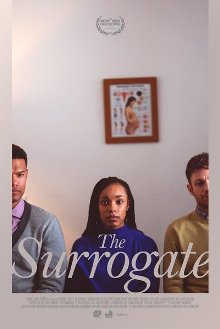When a child is born: the film lifting the lid on surrogacy, race and disability
By Cath Clarke,
The Guardian
| 06. 24. 2021
There are two films called The Surrogate. The first is a made-for-TV movie about an obsessive fan who cons her way into a writer’s life by carrying their baby.
“I’ve seen that movie,” says the director Jeremy Hersh, pulling a face. “I hope no one settles on that looking for this. It’s basically anti-women. The implication is that surrogates are crazy and calculating and out to steal some poor woman’s husband.”
Hersh’s film is different. It begins with a positive pregnancy test. “I’m just the vessel!” Jess (Jasmine Batchelor) announces brightly to a waitress at the Brooklyn restaurant where she is celebrating with the baby’s future fathers, Jess’s best friend Josh (Chris Perfetti) and his husband Aaron (Sullivan Jones).
Batchelor and Hersh are speaking to me over video call. It’s the former’s first film and she is extraordinary: real and raw, with an emotional precision that makes her compelling to watch. “When you read a script, especially as a black woman, it’s usually the wife or the girlfriend or the assistant,” she says. “To see a fully fledged character with...
Related Articles
By Courtney Withers and Daryna Zadvirna, ABC News | 12.03.2025
Same-sex couples, single people, transgender and intersex West Australians will be able to access assisted reproductive technology (ART) and surrogacy, almost a decade after reforms were first promised.
The landmark legislation, which removes the requirement for people to demonstrate medical...
By Rachel Hall, The Guardian | 11.20.2025
Couples are needlessly going through IVF because male infertility is under-researched, with the NHS too often failing to diagnose treatable causes, leading experts have said.
Poor understanding among GPs and a lack of specialists and NHS testing means male infertility...
By Grace Won, KQED [with CGS' Katie Hasson] | 12.02.2025
In the U.S., it’s illegal to edit genes in human embryos with the intention of creating a genetically engineered baby. But according to the Wall Street Journal, Bay Area startups are focused on just that. It wouldn’t be the first...
Several recent Biopolitical Times posts (1, 2, 3, 4) have called attention to the alarmingly rapid commercialization of “designer baby” technologies: polygenic embryo screening (especially its use to purportedly screen for traits like intelligence), in vitro gametogenesis (lab-made eggs and sperm), and heritable genome editing (also termed embryo editing or reproductive gene editing). Those three, together with artificial wombs, have been dubbed the “Gattaca stack” by Brian Armstrong, CEO of the cryptocurrency company...




